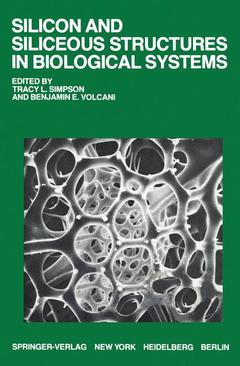The publication of this book was undertaken with two purposes in view: to bring together informatian on the deposition by living organ isms of unique skeletal structures composed of amorphous silica, and to review recent data on the involvement of silicon in physiological and biochemical processes. Although widely varying viewpoints are represented, all the contributors are very interested in the events in volved in the formatian of siliceaus structures and their function. Data presented deal with these questions in a variety of plant and animal systems, and at levels ranging from the evolutionary to the biochemical and ultrastructural. Innovations in electron microscopy and, indeed, the advent of electron microscopy itself, have stimulated many ultra structural studies of silica deposition, work which has deepened and widened the interest in those organisms which routinely produce "glassy skeletons. " The question of how silicon participates in biological systems in volves a spectrum of fields that indudes the chemistry of silicon per se, its biogeochemistry, biochemistry, ecology, and so forth. In this book, however, attention is focused up on the biological aspects of silicon and siliceous structures, with emphasis on the evolutian, phylogeny, morphology, and distribution of siliceaus structures, on the cellular as peets of silica deposition, and on the physiological and biochemical roles of silicon. This volume represents the first compilatian of such data. Because such a variety of subjects and fields are covered, the reader will have to glean for himself some of the comparative aspects of the data.

